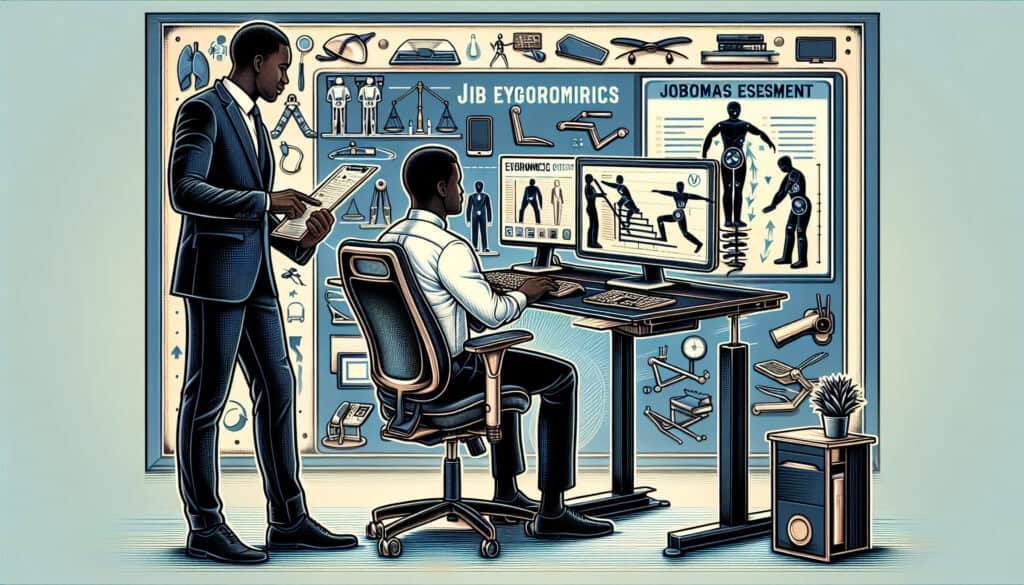A tool for identifying the مريح risks of a job.
- المنهجيات: لين سيجما, تصنيع, حل المشكلات, الجودة
Job Screen

Job Screen
- التحسين المستمر, بيئة العمل, العوامل البشرية, هندسة العوامل البشرية (HFE), التصنيع اللين, تحسين العمليات, إدارة الجودة, إدارة المخاطر, أمان
الهدف:
كيفية استخدامه:
- A quick and easy-to-use tool for identifying jobs with a high risk of musculoskeletal disorders. It typically involves a checklist of risk factors, such as awkward postures, repetitive motions, and forceful exertions.
الايجابيات
- Simple and easy to use; Can be used by people with limited ergonomics expertise.
سلبيات
- May not be as accurate or detailed as a full ergonomic assessment; May not identify all risk factors.
الفئات:
- بيئة العمل, إدارة المخاطر
الأفضل لـ
- Quickly identifying high-risk jobs in a workplace to prioritize for further ergonomic assessment.
The Job Screen methodology is particularly valuable in manufacturing, healthcare, and logistics industries, where physical labor and repetitive tasks are prevalent. This tool can be integrated during the initial phases of workplace safety assessments to pinpoint roles that pose a higher likelihood of musculoskeletal disorders. When implemented, it serves as a precursor to more detailed ergonomic evaluations, allowing companies to allocate resources effectively and prioritize interventions that protect employee health. The simple checklist format means that a range of personnel—such as safety officers, team leaders, and الموارد البشرية staff—can participate in the assessment, fostering a proactive workplace culture where employee wellbeing is prioritized. Organizations may choose to conduct these screenings regularly, especially when introducing new equipment or workflows that could alter job demands. The use of Job Screen facilitates early identification of risk, enabling improvements before injuries occur and creating a safer work environment that ultimately enhances employee satisfaction and productivity. Consideration of adjustments based on Job Screen results can lead to the adoption of ergonomic tools or training initiatives that better align with workers’ physical capabilities, which can lead to significant reductions in injury rates and associated costs over time.
الخطوات الرئيسية لهذه المنهجية
- Identify the job tasks performed within the workplace.
- Use the checklist to assess each task for risk factors such as awkward postures, repetitive motions, and forceful exertions.
- Assign a risk level to each task based on checklist findings.
- Prioritize jobs with higher risk levels for further ergonomic assessment.
نصائح للمحترفين
- Incorporate technology for real-time data collection, such as wearables or smartphone apps, to enhance Job Screen assessments.
- Encourage interdisciplinary collaboration with physiologists and ergonomists to refine your checklist based on the latest research findings.
- Regularly update your risk factor checklist based on feedback and field observations to ensure it remains relevant and effective.
لقراءة عدة منهجيات ومقارنتها, نوصي باستخدام
> مستودع المنهجيات الشامل <
مع أكثر من 400 منهجية أخرى.
نرحب بتعليقاتكم على هذه المنهجية أو المعلومات الإضافية على قسم التعليقات أدناه ↓، وكذلك أي أفكار أو روابط متعلقة بالهندسة.
منشورات ذات صلة
استبيانات الانزعاج العضلي الهيكلي
الاختبار متعدد المتغيرات (MVT)
تحليل الانحدار المتعدد
أنظمة التقاط الحركة
طريقة MoSCoW
اختبار متوسط المزاج